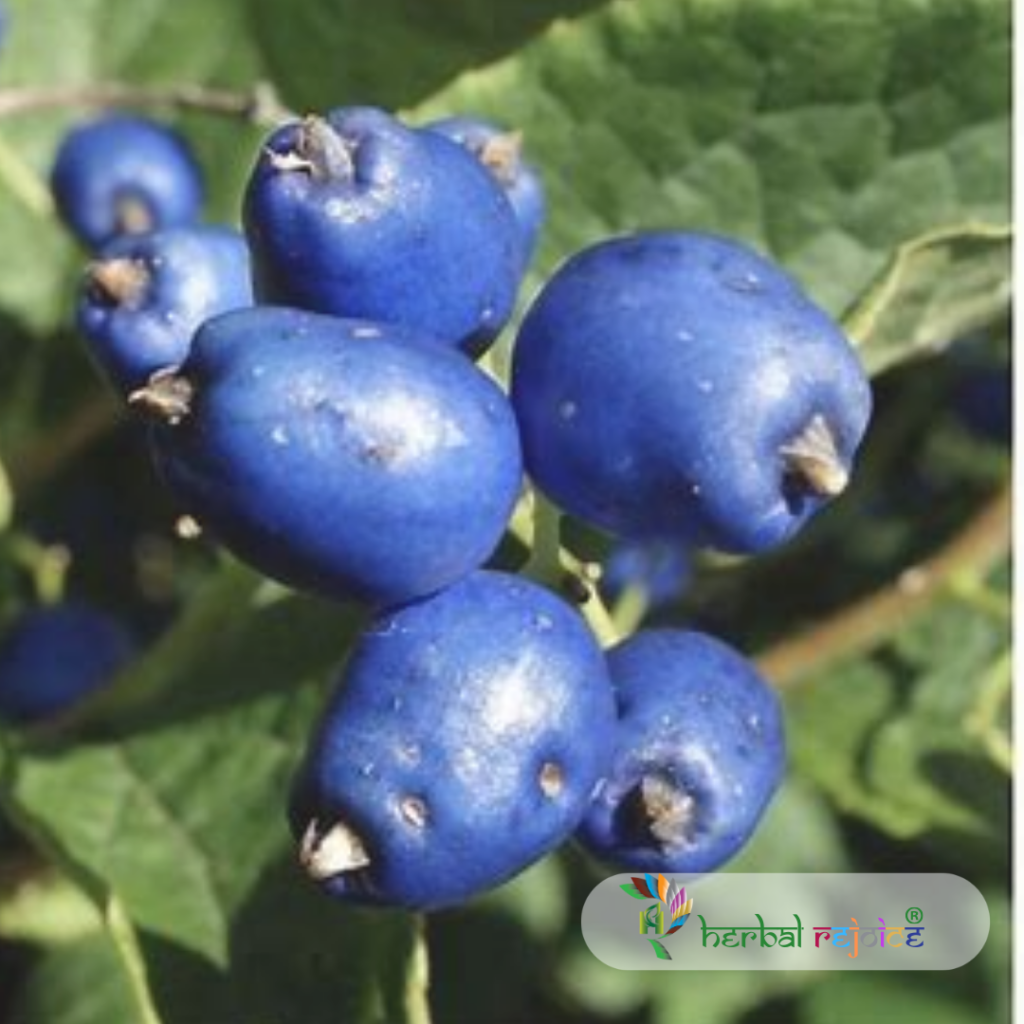Introduction
The Sapphire Berry, scientifically known as Symplocos paniculata (Thunb.) Miq., is a plant that belongs to the Symplocaceae family. This beautiful plant is native to the Himalayas, ranging from Kashmir to Arunachal Pradesh and Assam, as well as the Khasi Hills at altitudes of 1,000 to 2,500 meters. It is commonly referred to as Sapphire Berry in English, Lodhra-Pattikaa in Ayurvedic medicine, and Lodh Pathaani in Unani medicine.
Medicinal Uses
The Sapphire Berry plant offers a variety of medicinal benefits. Its leaves have spasmolytic, antiviral, antiprotozoal, and anthelmintic properties. The bark of the plant is used as a tonic to prevent abortion. Additionally, it shares similar uses with another species, S. racemosa.
Research has shown that the water-soluble fraction extracted from the bark of the Sapphire Berry plant has antioxytocic activity, meaning it can inhibit the hormone oxytocin, which is responsible for inducing contractions during childbirth. This property could be beneficial in preventing premature labor or miscarriages.

Moreover, the ethanolic extract derived from the leaves of the Sapphire Berry plant has showcased a range of activities. It has demonstrated antiparasitic activity against Entamoeba histolytica strain STA, a parasitic amoeba that can cause severe diarrhea and dysentery. It has also shown efficacy against Ascaridia galli, a common intestinal parasite in poultry, as well as the Ranikhet-disease virus. These findings suggest that the extract may have potential as an antiparasitic and antiviral agent.
Furthermore, the extract has a direct impact on blood pressure in dogs and cats. This suggests that it may have cardiovascular effects, making it a promising candidate for managing hypertension and other related conditions. Additionally, the extract has shown activity on the ileum of guinea pigs, indicating its potential as a spasmolytic agent for gastrointestinal disorders.
The stem of the Sapphire Berry plant has also exhibited blood pressure-regulating activity, further highlighting its cardiovascular effects. Overall, both the leaves and stem of this plant possess pharmacological activities that make them valuable in traditional medicine.
In Ayurvedic and Unani medicine, Sapphire Berry is widely used for its medicinal properties. The plant is believed to be beneficial for treating various ailments, including diarrhea, dysentery, parasites, and viral infections. Additionally, it is considered a tonic for pregnant women to prevent miscarriages.
Conclusion
In conclusion, the Sapphire Berry (Symplocos paniculata) is a remarkable plant with numerous medicinal properties. Its leaves and bark exhibit antiviral, antiparasitic, spasmolytic, and cardiovascular effects. These properties make it a valuable natural remedy for various ailments. Its traditional uses in Ayurvedic and Unani medicine further highlight its significance in traditional healing practices. With further scientific research, the Sapphire Berry may offer promising possibilities for the development of new therapeutic agents.
Frequently Asked Questions
What is the scientific name of the Sapphire Berry plant?
The scientific name of the Sapphire Berry plant is Symplocos paniculata (Thunb.) Miq.
Where is the Sapphire Berry plant native to?
The Sapphire Berry plant is native to the Himalayas, ranging from Kashmir to Arunachal Pradesh and Assam, as well as the Khasi Hills.
What are some common names for the Sapphire Berry plant?
Some common names for the Sapphire Berry plant include Sapphire Berry, Lodhra-Pattikaa (Ayurvedic medicine), and Lodh Pathaani (Unani medicine).
What are the medicinal properties of the Sapphire Berry plant’s leaves?
The leaves of the Sapphire Berry plant have spasmolytic, antiviral, antiprotozoal, and anthelmintic properties.
What is the bark of the Sapphire Berry plant used for?
The bark of the Sapphire Berry plant is used as a tonic to prevent abortion.
What is the antioxytocic activity of the water-soluble fraction extracted from the bark?
The water-soluble fraction extracted from the bark of the Sapphire Berry plant has antioxytocic activity, meaning it can inhibit the hormone oxytocin, which is responsible for inducing contractions during childbirth.
How might the extract from the leaves of the Sapphire Berry plant be beneficial?
The ethanolic extract from the leaves of the Sapphire Berry plant has shown antiparasitic activity against Entamoeba histolytica strain STA, which causes severe diarrhea and dysentery.
What parasites has the extract from the Sapphire Berry plant shown efficacy against?
The extract from the Sapphire Berry plant has shown efficacy against Ascaridia galli, a common intestinal parasite in poultry, as well as the Ranikhet-disease virus.
What potential does the extract from the Sapphire Berry plant have for managing hypertension?
The extract from the Sapphire Berry plant has shown a direct impact on blood pressure in dogs and cats, suggesting it may have cardiovascular effects and could be a candidate for managing hypertension.
How might the extract from the Sapphire Berry plant be useful for gastrointestinal disorders?
The extract from the Sapphire Berry plant has shown activity on the ileum of guinea pigs, indicating its potential as a spasmolytic agent for gastrointestinal disorders.
What traditional medicines commonly use Sapphire Berry?
Sapphire Berry is commonly used in Ayurvedic and Unani medicine.
What ailments is Sapphire Berry believed to be beneficial for?
Sapphire Berry is believed to be beneficial for treating ailments such as diarrhea, dysentery, parasites, and viral infections.
How is Sapphire Berry used in traditional medicine for pregnant women?
Sapphire Berry is considered a tonic for pregnant women to prevent miscarriages in traditional medicine.
What potential does the Sapphire Berry plant have for developing new therapeutic agents?
With further scientific research, the Sapphire Berry plant may offer promising possibilities for the development of new therapeutic agents.
Can the Sapphire Berry plant be used to treat viral infections?
Yes, the Sapphire Berry plant has been found to have antiviral properties.
Does the Sapphire Berry plant have any effects on blood pressure?
Yes, both the leaves and stem of the Sapphire Berry plant have been shown to have blood pressure-regulating activity.
Is Sapphire Berry a natural remedy?
Yes, Sapphire Berry is considered a natural remedy due to its medicinal properties.
What is the Ayurvedic name for Sapphire Berry?
The Ayurvedic name for Sapphire Berry is Lodhra-Pattikaa.
What family does the Sapphire Berry plant belong to?
The Sapphire Berry plant belongs to the Symplocaceae family.
Is the Sapphire Berry plant only found in the Himalayas?
Yes, the Sapphire Berry plant is primarily found in the Himalayas, ranging from Kashmir to Arunachal Pradesh and Assam, as well as the Khasi Hills.


